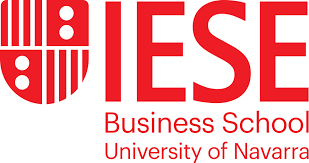How to Embrace New Opportunities
Better Organisations
How to Embrace New Opportunities
Tuesday, 15th March 2022
Pop quiz: Which of the following represents business model innovation?
A. Robot labourers
B .Plant-based meat substitutes
C. An online platform like Apple’s
Answer: C.
While A may result in efficiency gains, and B may be a popular new product, only C represents a fundamental change in the way business is being conducted, in this case for a consumer electronics company like Apple.
Business model innovation (or BMI) boils down to four things:
1. what you do (i.e. new business activities)
2. how you do it (i.e. new ways of linking the activities)
3. who does it (i.e. new activity governance and partnerships)
4. why the interplay of these elements allows for more value creation and capture (e.g. through new revenue models)
As I point out in my recent book, Business Model Innovation Strategy (Wiley, 2021), it’s only when you start reconfiguring these four, and actually change the activity system of your business, that you achieve BMI, rather than just tinkering around with individual activities, without changing the system, the way my examples above, A and B, do.
From my research, I've found BMI offers four main advantages:
1. It complements your product and process innovations, creating positive synergistic effects.
2. It can be cost-effective, since it does not necessarily require a large upfront investment.
3. It can serve as an effective barrier to imitation and therefore create a competitive advantage.
4. It can be a disruptive force in an industry, creating new markets and/or uncovering new opportunities in established ones.
To engage in BMI, you first need to understand your current business model.
I suggest you try this exercise:
Write one paragraph about how your firm’s business model works. In addition to what (activities), who (carries them out) and how (in what order they’re carried out), remember to briefly explain why (the main logic of value creation). You may find it helpful to draw it out, too. Armed with that, use these tips to start designing a new model:
Write a problem statement. Thinking of prospective customers’ goals and needs, write out a problem they might have (from their point of view, not your own).
Formulate a questionnaire. Don’t assume you know how to address the problem yet. Ask prospective customers, as weII as employees, suppliers and other stakeholders, to probe the nature of the problem.
Consider successful templates. Examine how other business models out there address the problem. Don’t restrict your search to your own industry but look farther afield to learn new (to you) templates. When benchmarking and copying elements from other business models, don't forget that things can and often should be redesigned with novel features.
Scan the environment. Particularly in times of change, like now, do a PEST (Political, Economic, Social and Technological) analysis. Imagine future scenarios, using strategic foresight tools to help you think about future possibilities.
Seek out valuable partnerships. The previous steps may lead you to identify new partners whose capabilities can fill gaps in your own.
Redeploy resources and capabilities. Sometimes it may be necessary to pivot. Going through this exercise of thinking about your business model in abstract, conceptual terms help in identifying elements of your existing model that could be applied to a new domain. A strategy workshop, or leveraging the views of outsiders, can give you a healthy distance, so you don’t get so mired in the day-to-day that you no longer see the forest for the trees.
Experiment. Once a new way of doing business has been sketched out, it should be possible to engage in some low-cost experimentation. Experiments not only serve to test your hypotheses, they also help overcome inertia in well-established firms.
Test assumptions. There are many questions to ask:
Is there demand?
Will your suppliers find value in working with you?
Is the environment changing in a way that’s compatible with your medium-term plans?
Here is where a Test Assumption Matrix (TAM) can come in handy. In a TAM table, each row highlights critical assumptions of the business model, while each column contains milestones, using low-cost experiments. Make it dynamic: Changing the order of the rows can highlight your changing priorities, based on the results recorded in your columns. Empirical evidence from your tests can validate your model and mitigate risk, tackling the business model one piece at time.
As you go through this process, you can ask yourself these six questions:
1. What perceived customer needs can be satisfied through the new business model design?
2. What novel activities are needed to satisfy these perceived needs?
3. How could the required activities be linked to each other in novel ways?
4. Who should perform each of the activities that are part of the business model (e.g. the focal firm or a partner) and what novel governance arrangements could enable this structure?
5. How can value be created in novel ways through the business model for each of the participants?
6. What novel revenue model fits with the firm’s business model to appropriate part of the total value it helps create?
When presenting BMI in your organisation, be conscious of how you do it.
When framed as a response to a competitive threat, people tend to get more rigid, which restricts information, narrows attention and reduces channels, resulting in inertia.
When framed as a response to a market opportunity, people react more positively under the expectation of gain, which motivates change and promotes innovation.
Opportunity and threat perceptions act as important cognitive antecedents to business model change and innovation.
If you are interested in delving into this further, check out the online Business Model Innovation course IESE Business School will be running in May 2022: https://execedprograms.iese.edu/strategic-manageme...
If you are participating on the 2022 Advanced Leadership Programme you will be joined by me in June 2022 as we tease out aspects of Business Model Innovation and Entrepreneurship.
Better People, Better Organisations, Better Society

